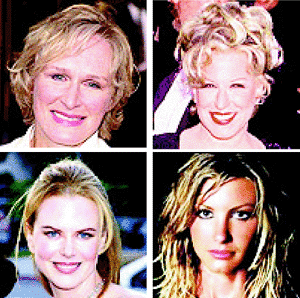Cabaret kicks up its heels
June 2 2003
The Age
The surest signs of health and vigour in any industry or artform are growth and change. By these indicators, the Australian cabaret scene is thriving at a grassroots and professional level across the country.
Further examples of innovation and expansion include the massively restructured, week-long seventh Sydney Cabaret Convention, which concluded on Saturday.
The intelligently programmed third Adelaide Cabaret Festival opens on June 6 for three weeks, and, for the first time, there is an Adelaide Cabaret Fringe Festival.
The three festivals are vastly different in style, yet all the artistic directors – Ron Creager in Sydney, Julia Holt in Adelaide, and Torsten Meyer of the Fringe – are equally passionate about furthering and consolidating the art and future of Australian cabaret.
Creager, appointed this year as the first artistic director of the Sydney convention, had the daunting task of remaking the event on a shoestring budget. Based on the New York Cabaret Convention, and run for six years by a bureaucracy (the cultural affairs and events committee of the City of Sydney), the competition was somewhat inhumane in the past, showcasing more than 40 aspiring singers who were each given seven minutes to shine. They were judged on musicianship, presentation and choice of material.
The competition prize has stayed the same – the chance to perform at the New York Cabaret Convention in October – but Creager introduced pre-auditions so only 12 artistes competed, three per night. They performed alongside three of Australia’s top cabaret performers, who included Toni Lamond, Tony Sheldon, Eddie Perfect, Lorrae Desmond and Mark Jones. This year the judges were Helen Reddy, Bernadette Hayes and Egil Kipste from Disney.
Creager also expanded the competitors’ performance time to 12 minutes. “I thought, if they’re going to New York, they need to be able to handle 12 minutes, otherwise they don’t deserve to go,” he says.
The rejuvenated SCC was a huge success this year, with most nights selling out. Creager was vindicated in turning the Sydney Town Hall into a cabaret venue with tables and chairs, and initiating an Australian music night.
“I can exhale now,” Creager says. “It was amazing, no one went home; they were agog every night.”
In Adelaide, Holt is in the lucky position of building on the festival’s success last year, when more than 40,000 tickets were sold. The 2003 festival features more than 400 performers (100 more musicians than last year), in a classy and wide-ranging interpretation of cabaret, including Testimony: The Legend of Charlie Parker; the dangerous falsetto hijinks of British trio The Tiger Lillies; Tripod; Caroline Nin from Paris with Hymne a Piaf; The Fabulous Singlettes; Christine Johnston’s A Decent Spinster; the Ennio Morricone Experience; and New York legends Jason Robert Brown, KT Sullivan and Mark Nadler, and The Broadway Divas directed by Gordon Greenberg.
“New York cabaret sprang out of the jazz clubs of the 1950s,” says Holt, who is experimenting with cross-pollination by bringing the New York stars here for the first time, with Tony award-winning Brown premiering an orchestral version of his Songs For A New World with the Adelaide Art Orchestra.
“It’s like, ‘you have the idea, we’ll provide the musicians’. I want Adelaide to get a reputation for what we can provide,” says Holt, who put the emphasis of the festival this year less on the singers, and more on the composers and musicians. She has also beefed up the masterclass series, presenting classes with Brown, Greenberg, Nancye Hayes and Avigail Herman.
“I think it’s really important for cabaret to develop professionally, and unless you’re at uni, there’s not much opportunity for study. The masterclasses are an important way of addressing that.”
The Adelaide Cabaret Fringe, housed in Adelaide’s only full-time cabaret venue, The Weimar Room on Hindley Street, is different again. Curated by Meyer, who is presenting 26 acts, the feel is much grungier, sexually aware, and European than its mistress festival.
“We wanted to present true cabaret,” says Meyer, whose 16- month-old room is an old-world cabaret venue inspired by Europe and New York in the 1920s and 1940s. The program, which includes a performance from 2003 Raw Comedy winner Steve Sheehan in The Weimar’s flagship show Berlin Cabaret, also features such underbelly and debauched acts as Show Tunes For An Age Of Fear, Wurst (about 1920s cabaret performers addicted to cocaine and pain), and a Bette Midler tribute.
In June, as always, it looks as though all tastes will be catered for in Adelaide.






